How Dungeons & Dragons: Honor Among Thieves Became a High Fantasy Heist Movie
Exclusive: Directors Jonathan Goldstein and John Francis Daley talk us through the quest to bring Dungeons & Dragons from the game table to the silver screen.
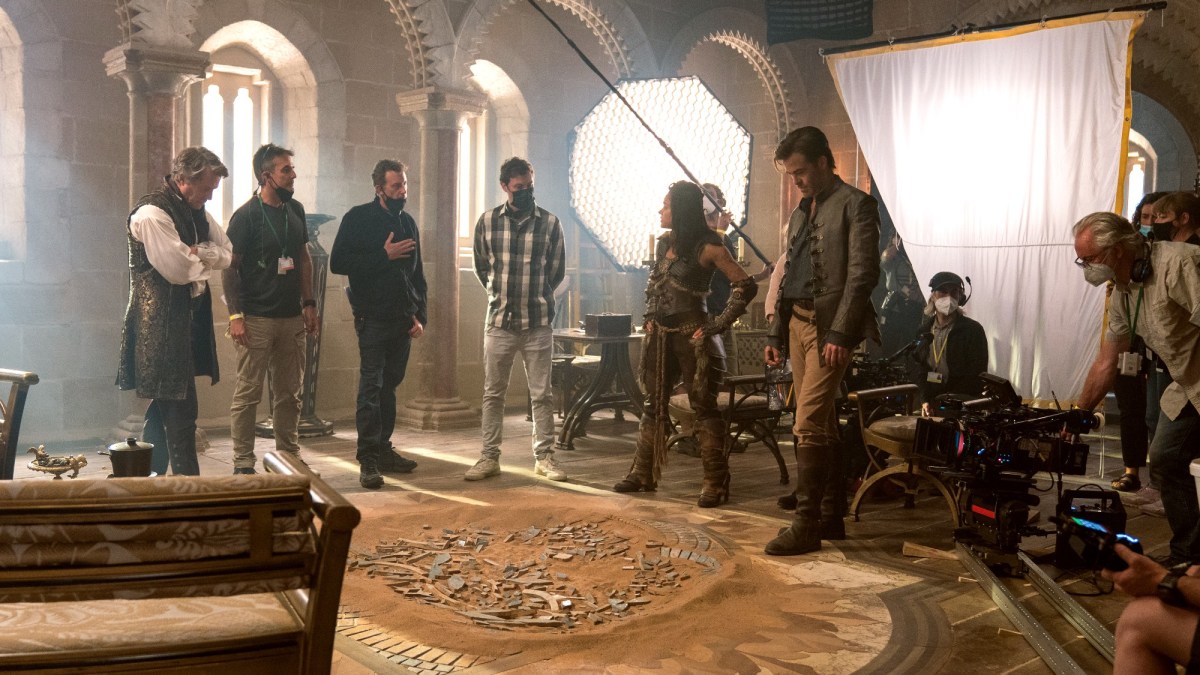
This article is presented by Paramount Pictures. 
The first step of any Dungeons & Dragons campaign is to pick your character class. The character class decides your aptitudes and your play style and is often a big clue as to what you want to get out of the game.
“I’m usually a paladin,” says John Francis Daley, one of the writers and directors of Dungeons & Dragons: Honor Among Thieves. “The Paladins have an unusually stacked list of advantages, and I like to take advantage of all of them.”
His co-director and writer, Jonathan Goldstein, hasn’t played Dungeons & Dragons since he was a kid; however, he doesn’t hesitate before answering, “If I did play now, I’d be a bard. I don’t like to fight.”
In real life, however, Goldstein and Daley are multiclassing as writers and directors, with the screenplay to Spider-Man: Homecoming behind them, as well as the comedies Game Night and Vacation. While the pair have not gone far into the action/adventure genre yet, talking to them, it is clear how much they love it.
“We talk about our influences ranging from Princess Bride and Monty Python and the Holy Grail on the broader side of things, to The Lord of the Rings,” Goldstein tells us. “We’re kind of straddling the two worlds. Ours is a movie that doesn’t take itself with great seriousness, but it’s never a spoof. It honors the world of D&D and celebrates it, but hopefully, it gives the audience an engaging and fun ride.”
That ride could not have come at a better time. With series like The Lord of the Rings: The Rings of Power, House of the Dragon, and Disney+’s new Willow revival lighting up our screens at home, and Warner Bros. just announcing a new series of movies set in Middle-earth, audiences haven’t been this ready for some old-fashioned, big-screen fantasy action since we last saw Bilbo Baggins.
At the same time, Netflix’s continuing juggernaut, Stranger Things, has introduced a whole new generation to the Dungeons & Dragons hobby, with words like Demogorgon, Mindflayer, and Vecna penetrating the public consciousness in a way that they never had as entries in Dungeons & Dragons bestiaries and rulebooks.
But while the fantasy genre is undergoing an on-screen renaissance, and interest in roleplaying games in general and Dungeons & Dragons, in particular, has never been higher, no movie has yet been able to capture the unique kind of chaos found in stories created at the game table. Dungeons & Dragons: Honor Among Thieves aims to do just that.
“The thing that is so unique to D&D is the spirit of gameplay. There is this level of unpredictability and subverting a narrative where you think you’re gonna go down one road, and suddenly one roll of the die takes you down a road that not even the Dungeon Master anticipates,” Daley explains. “That was something that we found very interesting and different from the types of fantasy films we’ve seen in the past.”
The influences that fuel Dungeons & Dragons: Honor Among Thieves are not all swords and sorcery, however. Daley takes another direction entirely.
“For me, Indiana Jones is quintessentially Dungeons & Dragons,” he says. “It literally starts with the dungeon crawl. Granted, he’s not in an ensemble, he’s a solo player, which might not be the most fun campaign in real life. But, boy, every set piece feels like a well-curated campaign by a dungeon master.”
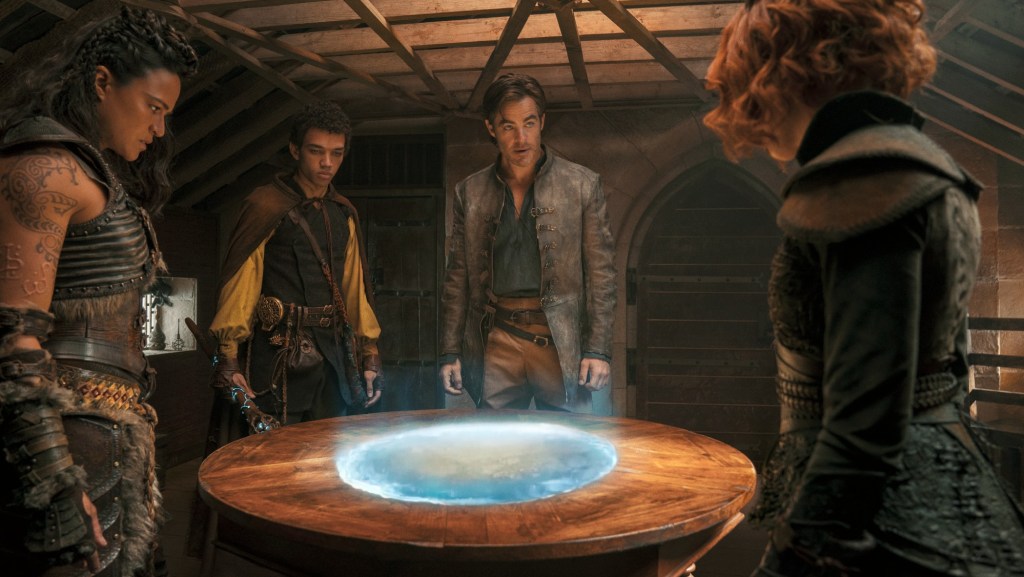
Putting the Heist Together
That Indiana Jones format—go into the maze, solve the puzzles, dodge the traps, and grab the treasure—is not just evocative of Dungeons & Dragons but another genre entirely: the heist movie. And ultimately, the heist genre became the foundation for the film Goldstein and Daley decided to make.
“We wanted to create a film that would be entertaining and appealing to all audiences, whether you knew D&D or not,” Goldstein says. “For that to work, we needed a sort of scaffolding and infrastructure for the movie that would be enjoyable and engaging. We’ve always wanted to do a heist movie.”
The structure of a heist seemed like a fun opportunity to take the audience through the world of D&D in a way they had not seen before, given it is a sub-genre not normally explored by fantasy films.
“It is a genre that people are familiar with and can kind of serve as a gateway to the uninitiated,” Daley says. “They understand what our characters are setting out to do without being overwhelmed by lore or proper nouns that might confuse them.”
While providing a way in for new audiences, the heist framework also allowed the directors to introduce the kinds of challenges that are the bread and butter of your typical Dungeons & Dragons game.
“Because it’s a heist picture, we would often write ourselves into a predicament that our characters have to face,” Daley says. “Whether it be how do we sneak this picture frame that has a portal on it into a carriage? Or how do we cross this elaborately booby-trapped bridge? We needed to figure out the best possible way to get across which is so evocative of gameplay. You’re talking to each other, communicating, and figuring out the best possible plan of attack.”
That freedom and creativity offered by Dungeons & Dragons were formative for the nascent director in young Goldstein.
“I just loved the idea of a game that you essentially made up yourself,” he recalls. “The freedom of that was intoxicating. It was eye-opening.”
Daley, meanwhile, is still a passionate player of the game today. As Goldstein points out, “Ironically, the movie took him away from playing!”
Daley says, “A couple of years before the pandemic, I got back into a campaign with my group of friends and was immediately reminded of the reason why I loved it so much. I was playing, basically, up until we left to shoot the movie.”
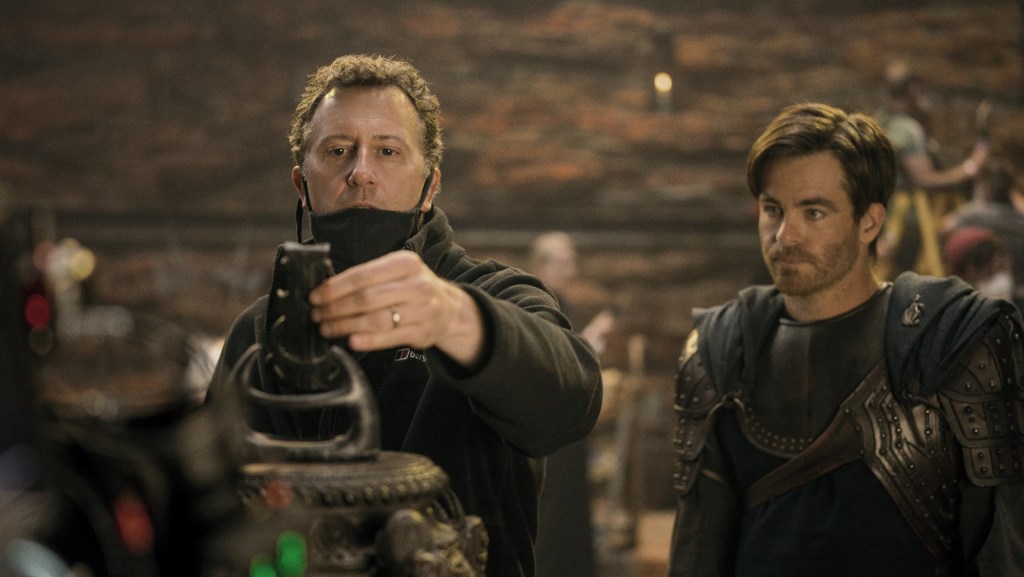
Practical Magic
Although Daley and Goldstein were doing a lot to subvert the fantasy genre, there were also elements of old fantasy films they were keen to bring into Honor Among Thieves. Particularly the special effects.
“One of the biggest selling points we had for joining this project when we were pitching our take to the studio was that we really wanted to lean into practical effects,” Daley tells us. “Not taking anything away from the visual effects, which there are a substantial amount of in this film, but for us, we think this is such a fun throwback to the adventure and fantasy films from our youth in the ‘80s and ‘90s. That reliance on practical effects where you didn’t have the benefit of CGI.”
Daley and Goldstein sought to find a perfect hybrid, a fusion of the two different approaches that felt tangible and real and just all-around visually fun.
“I think the audience can feel the difference,” Goldstein says.
Each of the directors has their own favorite practical effect. Goldstein’s is a baby tabaxi (a kind of cat person).
“The thing is just incredible,” he says. “It looks so real.”
Daley’s favorite is much less cute—the Dragonborn, who, like the name suggests, look like humanoid dragons. Unsurprisingly, the realistic movements of the Dragonborn in Honor Among Thieves are achieved through motion capture. More surprisingly, those motion-captured movements are applied to animatronics.
“All of our Dragonborn were practical,” Daley explains. “They utilize state-of-the-art motion capture technology, where they had cameras trained on the puppeteer who would say the lines and make facial expressions, and those movements translated to the servo motors in the face of the Dragonborn. It even got the lip sync down. Nowadays, with some of these practical effects, especially with the best versions, they utilize computer technology just like the CGI effects do.”
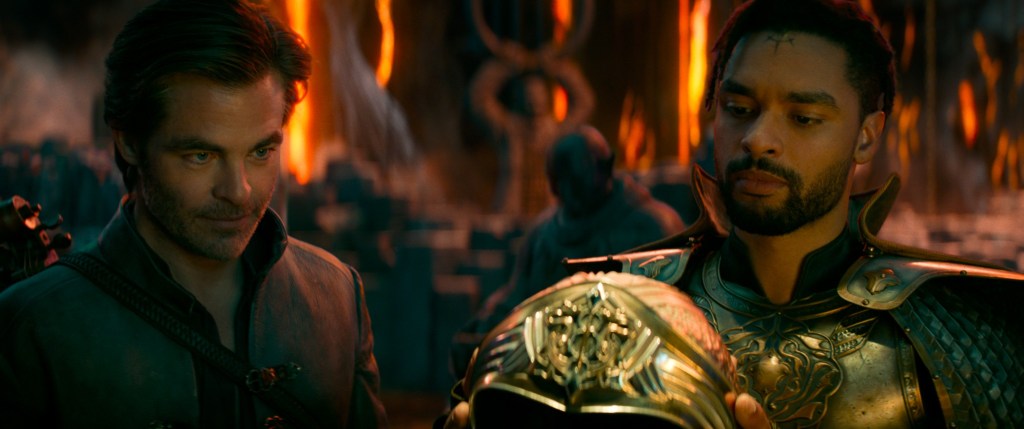
A Motley Crew
Ultimately, Honor Among Thieves is a story about characters, and the adventuring party at the center of the film is its most important element.
For Goldstein, it came down to the age-old adage among D&D players—“You never split up the party.”
“That spirit of collaboration is integral to playing D&D,” Goldstein says. “We designed a group that would need one another to succeed because none of them by themselves is great. And together, they become this unlikely family and find their strengths in the group.”
The characters they created weren’t defined by their superpowers or special abilities but by their flaws and vulnerabilities.
“The impairments help to establish a character that has room for growth,” Daley says. “What gave us a lot of freedom to create fleshed-out backstories for each of our characters was the fact that they have a lot of flaws that they have to work through.”
This was even visible in the magic spells characters were allowed to use; as Goldstein points out, “There’s a tendency to think that magic can solve all problems, and we have our sorcerer address that directly in the film. Because it makes storytelling nearly impossible if you can solve any problem with a magical spell.”
But while each of the “heroes” (if you can call them that) in Honor Among Thieves has their own flaws and limitations, when they come together, they truly shine.
“It was important to us to find a diverse group, in terms of their personality types, their skill sets, what makes each of them appealing in their own unique way, which is obviously crucial to a good adventuring party in a campaign, but also crucial to a film ensemble,” Daley tells us. “You don’t want people that are similar; they all have to bring their host of bizarre personalities. And that to us was crucial.”
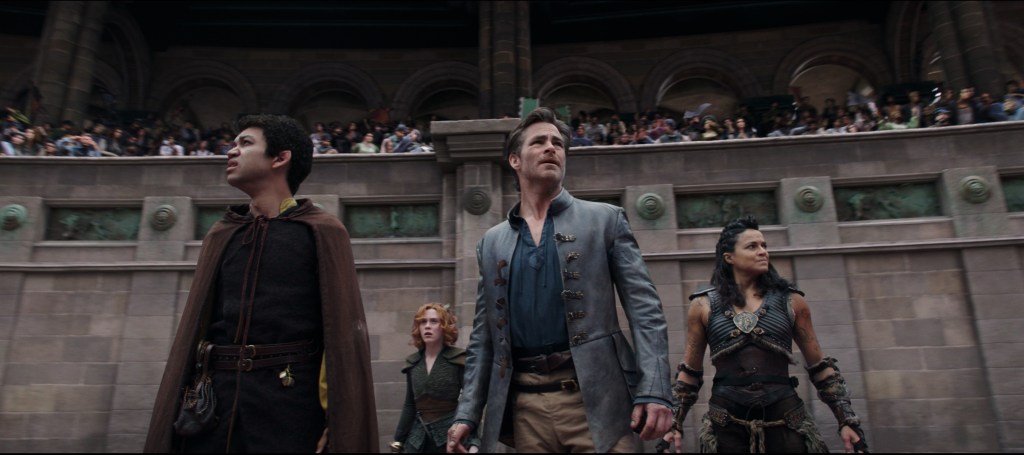
Role Playing
Having written the characters, the next step was to assemble the cast to play them. But for a Dungeons & Dragons movie, “playing” had a slightly different meaning…
“When the actors arrived in Belfast, we played a several-hours-long game of D&D with them,” Goldstein says. “And that gave those who were not familiar with it a quick taste of what the game is like and how you interact, and they played as their characters.”
It not only helped the cast bond and introduced them to the world but also informed the directors’ takes on the characters.
“It was informative, both to them and to us, because I think we incorporated some of the things we learned from that game into the film,” Goldstein says.
During their pre-shoot D&D game, the directors learned quite a bit about their cast.
“I would say that every time Justice Smith had to perform an action, it was Animal Friendship. A lot,” Daley recalls, referring to a spell that lets you convince a beast that you mean it no harm. “He relied on Animal Friendship at every turn, even in the least appropriate times.”
Goldstein adds, “He’d be falling off a cliff with no animals around, and he would still try Animal Friendship.”
Other players showed a far more in-depth grasp of the rules. For instance, Regé-Jean Page, who plays the Paladin, Xenk.
“We got a first glimpse at his true geekdom because he very much knew the mechanics of the game,” Daley says. “I think he spent a lot of time playing role-playing games, and despite his being incredibly handsome and talented and an athletic fighter, he’s also one of the biggest nerds I’ve ever met.”
While the game was informative, it was also fun and set the tone for the kind of experience Goldstein and Daley wanted to create with Honor Among Thieves.
“I want audiences to feel better leaving the theater than they felt coming in,” Daley says. “I have my own personal experiences with some of the movies that shaped me and made me want to become a filmmaker. That feeling was something that drove me throughout this process, to get other people to feel that way as well. That, to me, is the most gratifying thing a filmmaker could ask for.”
So is this the end of their quest? Or do further adventures await? Neither of the directors will be drawn on the question of a potential sequel. It is clear they are excited for people to see the world they have created, but when it comes to talk of a broader franchise, they take their cues from producer Jeremy Latcham, who was previously the producer on the mega franchise-founding Iron Man movie, as well as several of the Marvel Cinematic Universe’s highpoints since.
“We’d be excited to dive back into this world, but our producer Jeremy Latcham likes to remind us of his approach in the early days of Marvel – make one good movie,” Goldstein says. “Don’t think about universe building. Don’t think about franchises. Just put everything into the one movie you’re making. Then if it works, you do more. That’s how we approached it.”
Daley agrees, adding, “The thing that we are most excited about now is not even the potential for a sequel, but just finally being able to present this film that has been a labor of love and a lot of hard work on not only our part but on the part of the hundreds and hundreds of technicians and filmmakers that worked alongside us to be able to bring that out to the world.”
Dungeons & Dragons: Honor Among Thieves hits theaters on March 31.
